-
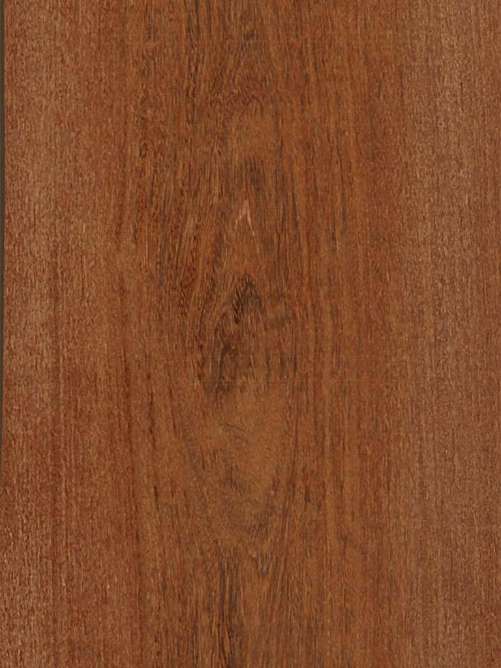 Named for a city in northern Brazil, Sucupira is a South American hardwood with a character similar to rosewood or teak. It has a warm chocolate color with a fine yellow stripe, a lustrous finish, and a lively interlocking grain that is rarely figured. The flat cut veneer produces a beautiful cathedral pattern. Learn About Veneer Cut & Matching
Named for a city in northern Brazil, Sucupira is a South American hardwood with a character similar to rosewood or teak. It has a warm chocolate color with a fine yellow stripe, a lustrous finish, and a lively interlocking grain that is rarely figured. The flat cut veneer produces a beautiful cathedral pattern. Learn About Veneer Cut & Matching -
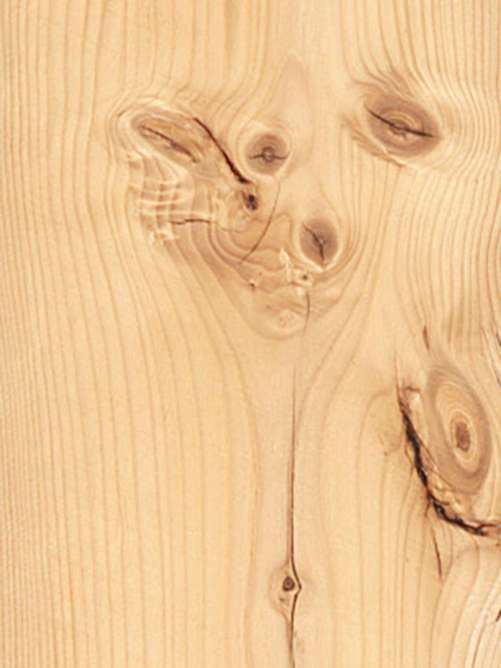 Vintage knotty spruce is sliced from hand-hewn beams reclaimed from old farmhouses, barns, or commercial buildings. Preserving the natural character of the wood, the beams are washed, de-nailed, dimensionally sorted, and then sliced into veneer. The veneer is generally straight-grained with knotty characteristics that include splits, checks, nail holes, and occasional discolorations that reflect its history and give the wood a rustic feel. This veneer is sliced at 1.4 mm and intended for use in random sequences. Learn About Veneer Cut & Matching
Vintage knotty spruce is sliced from hand-hewn beams reclaimed from old farmhouses, barns, or commercial buildings. Preserving the natural character of the wood, the beams are washed, de-nailed, dimensionally sorted, and then sliced into veneer. The veneer is generally straight-grained with knotty characteristics that include splits, checks, nail holes, and occasional discolorations that reflect its history and give the wood a rustic feel. This veneer is sliced at 1.4 mm and intended for use in random sequences. Learn About Veneer Cut & Matching -
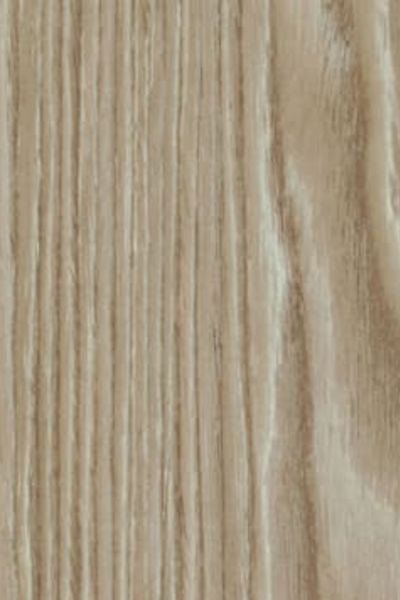 Brookside Veneers, Produced by Alpi Spa. Learn About Veneer Cut & Matching
Brookside Veneers, Produced by Alpi Spa. Learn About Veneer Cut & Matching -
 Pale yellow-gray to nearly white, sen is Japanese ash popular in Japan for both furniture and interiors. It has a straight, fine grain when cut on the quarter and a nice cathedral character with a fine grain on either side of the heart when flat cut. When marked with a Pommele figure, this veneer is called "Tamo". Sen is an excellent choice for a variety of interiors aesthetics including modern, Asian, and minimalist designs. Learn About Veneer Cut & Matching
Pale yellow-gray to nearly white, sen is Japanese ash popular in Japan for both furniture and interiors. It has a straight, fine grain when cut on the quarter and a nice cathedral character with a fine grain on either side of the heart when flat cut. When marked with a Pommele figure, this veneer is called "Tamo". Sen is an excellent choice for a variety of interiors aesthetics including modern, Asian, and minimalist designs. Learn About Veneer Cut & Matching -
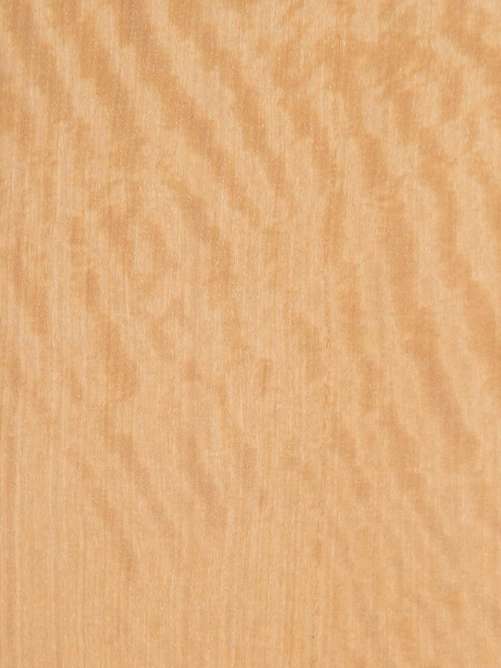 Satinwood is a pale gold wood with a rippled grain and straight striping. Typically figured, Satinwood often produces a bee’s wing or mottle figure. Satinwood is used for decorative inlays on table and conference tops. It is also used for high-quality furniture and cabinets. Select logs are sliced to produce extremely attractive veneers for high-end architectural paneling, cabinets, and marquetry. Learn About Veneer Cut & Matching
Satinwood is a pale gold wood with a rippled grain and straight striping. Typically figured, Satinwood often produces a bee’s wing or mottle figure. Satinwood is used for decorative inlays on table and conference tops. It is also used for high-quality furniture and cabinets. Select logs are sliced to produce extremely attractive veneers for high-end architectural paneling, cabinets, and marquetry. Learn About Veneer Cut & Matching -
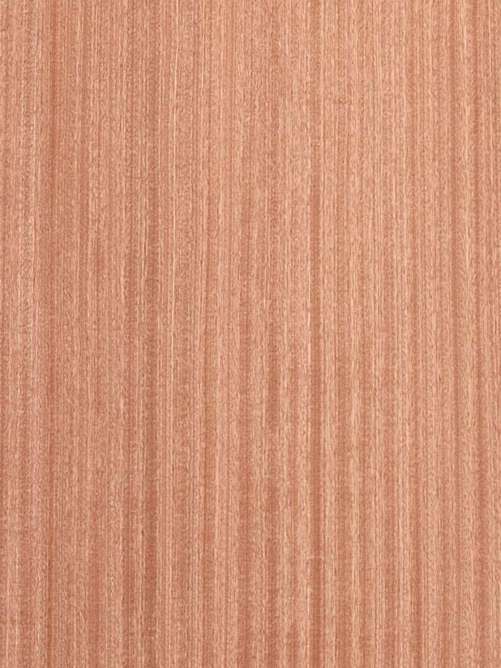 Sapele varies in color from log to log but is generally medium to dark red-brown. Finishing brings out an intense depth of color and highlights its natural luster, which is similar to mahogany. This veneer has a fine grain, a distinct and desirable stripe formation, and often carries a lively figure. Flat cut Sapele shows the characteristic heart or cathedral grain The highly prized Pommele Sapele is intensely marked with a swirly grain and randomly interspersed blisters, or Pommele markings. A high degree of luster gives Sapele a three-dimensional effect. Learn About Veneer Cut & Matching
Sapele varies in color from log to log but is generally medium to dark red-brown. Finishing brings out an intense depth of color and highlights its natural luster, which is similar to mahogany. This veneer has a fine grain, a distinct and desirable stripe formation, and often carries a lively figure. Flat cut Sapele shows the characteristic heart or cathedral grain The highly prized Pommele Sapele is intensely marked with a swirly grain and randomly interspersed blisters, or Pommele markings. A high degree of luster gives Sapele a three-dimensional effect. Learn About Veneer Cut & Matching -
 Sapele varies in color from log to log but is generally medium to dark red-brown. Finishing brings out an intense depth of color and highlights its natural luster, which is similar to mahogany. This veneer has a fine grain, a distinct and desirable stripe formation, and often carries a lively figure. Flat cut Sapele shows the characteristic heart or cathedral grain The highly prized Pommele Sapele is intensely marked with a swirly grain and randomly interspersed blisters, or Pommele markings. A high degree of luster gives Sapele a three-dimensional effect. Learn About Veneer Cut & Matching
Sapele varies in color from log to log but is generally medium to dark red-brown. Finishing brings out an intense depth of color and highlights its natural luster, which is similar to mahogany. This veneer has a fine grain, a distinct and desirable stripe formation, and often carries a lively figure. Flat cut Sapele shows the characteristic heart or cathedral grain The highly prized Pommele Sapele is intensely marked with a swirly grain and randomly interspersed blisters, or Pommele markings. A high degree of luster gives Sapele a three-dimensional effect. Learn About Veneer Cut & Matching -
 Sapele varies in color from log to log but is generally medium to dark red-brown. Finishing brings out an intense depth of color and highlights its natural luster, which is similar to mahogany. This veneer has a fine grain, a distinct and desirable stripe formation, and often carries a lively figure. Flat cut Sapele shows the characteristic heart or cathedral grain The highly prized Pommele Sapele is intensely marked with a swirly grain and randomly interspersed blisters, or Pommele markings. A high degree of luster gives Sapele a three-dimensional effect. Learn About Veneer Cut & Matching
Sapele varies in color from log to log but is generally medium to dark red-brown. Finishing brings out an intense depth of color and highlights its natural luster, which is similar to mahogany. This veneer has a fine grain, a distinct and desirable stripe formation, and often carries a lively figure. Flat cut Sapele shows the characteristic heart or cathedral grain The highly prized Pommele Sapele is intensely marked with a swirly grain and randomly interspersed blisters, or Pommele markings. A high degree of luster gives Sapele a three-dimensional effect. Learn About Veneer Cut & Matching -
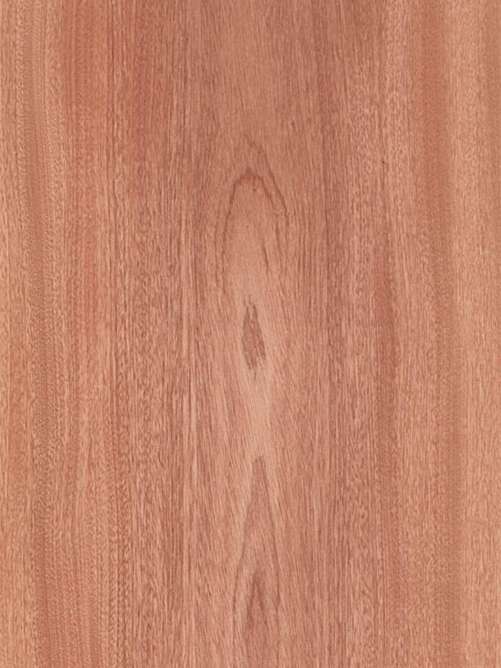 Sapele varies in color from log to log but is generally medium to dark red-brown. Finishing brings out an intense depth of color and highlights its natural luster, which is similar to mahogany. This veneer has a fine grain, a distinct and desirable stripe formation, and often carries a lively figure. Flat cut Sapele shows the characteristic heart or cathedral grain The highly prized Pommele Sapele is intensely marked with a swirly grain and randomly interspersed blisters, or Pommele markings. A high degree of luster gives Sapele a three-dimensional effect. Learn About Veneer Cut & Matching
Sapele varies in color from log to log but is generally medium to dark red-brown. Finishing brings out an intense depth of color and highlights its natural luster, which is similar to mahogany. This veneer has a fine grain, a distinct and desirable stripe formation, and often carries a lively figure. Flat cut Sapele shows the characteristic heart or cathedral grain The highly prized Pommele Sapele is intensely marked with a swirly grain and randomly interspersed blisters, or Pommele markings. A high degree of luster gives Sapele a three-dimensional effect. Learn About Veneer Cut & Matching -
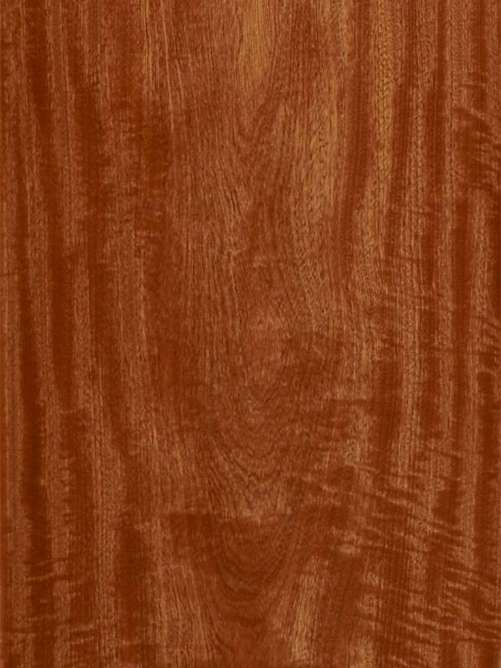 Sapele varies in color from log to log but is generally medium to dark red-brown. Finishing brings out an intense depth of color and highlights its natural luster, which is similar to mahogany. This veneer has a fine grain, a distinct and desirable stripe formation, and often carries a lively figure. Flat cut Sapele shows the characteristic heart or cathedral grain The highly prized Pommele Sapele is intensely marked with a swirly grain and randomly interspersed blisters, or Pommele markings. A high degree of luster gives Sapele a three-dimensional effect. Learn About Veneer Cut & Matching
Sapele varies in color from log to log but is generally medium to dark red-brown. Finishing brings out an intense depth of color and highlights its natural luster, which is similar to mahogany. This veneer has a fine grain, a distinct and desirable stripe formation, and often carries a lively figure. Flat cut Sapele shows the characteristic heart or cathedral grain The highly prized Pommele Sapele is intensely marked with a swirly grain and randomly interspersed blisters, or Pommele markings. A high degree of luster gives Sapele a three-dimensional effect. Learn About Veneer Cut & Matching -
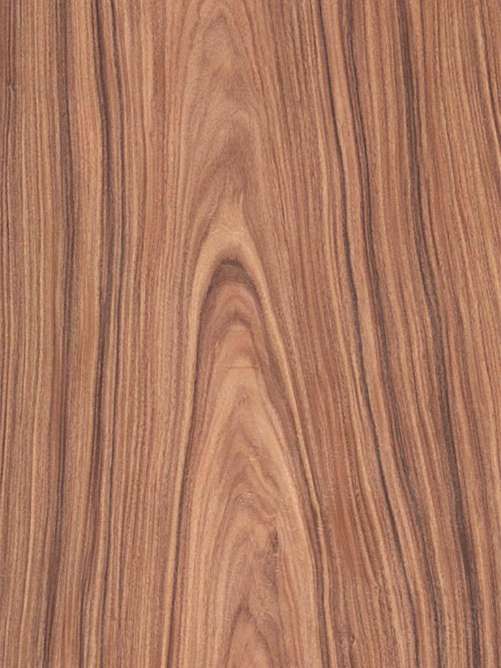 This is one of the world’s most loved and prized veneers. It ranges in color from lustrous chocolate-brown to purple-black with cream-colored sapwood—all very saturated with vivid contrast. It has a lively variegated stripe and occasional bee’s wing figure and, when flat cut, produces a characteristic cathedral pattern. Increasingly used as a substitute for the extremely rare but prized Rio rosewood. Learn About Veneer Cut & Matching
This is one of the world’s most loved and prized veneers. It ranges in color from lustrous chocolate-brown to purple-black with cream-colored sapwood—all very saturated with vivid contrast. It has a lively variegated stripe and occasional bee’s wing figure and, when flat cut, produces a characteristic cathedral pattern. Increasingly used as a substitute for the extremely rare but prized Rio rosewood. Learn About Veneer Cut & Matching -
 Madagascar Rosewood can be found in various shades of deep brown to reddish-brown. The veneer has a medium to fine texture and ribbon grain, typical of rosewoods, with pronounced dark red, vertical lines that can be wavy in some logs. Darker streaks are common and can produce a spiderweb-like figure. Flat cut, the log produces a swirly, burl-like heart. Learn About Veneer Cut & Matching
Madagascar Rosewood can be found in various shades of deep brown to reddish-brown. The veneer has a medium to fine texture and ribbon grain, typical of rosewoods, with pronounced dark red, vertical lines that can be wavy in some logs. Darker streaks are common and can produce a spiderweb-like figure. Flat cut, the log produces a swirly, burl-like heart. Learn About Veneer Cut & Matching

